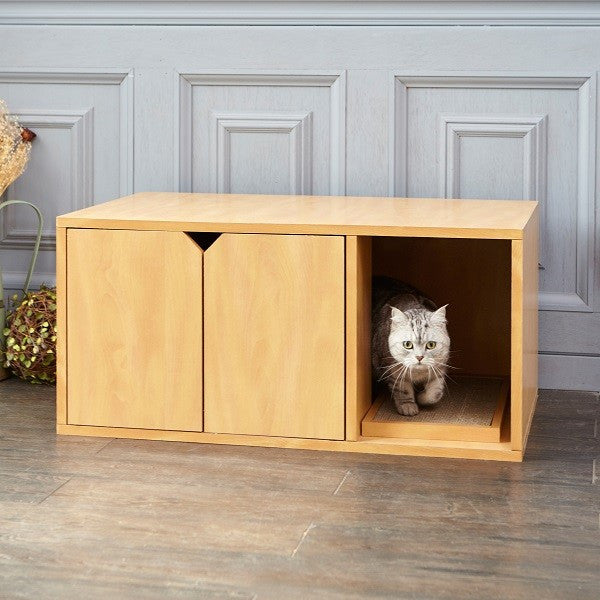
How to Keep Dogs Out of Cat Litter Boxes
As a dog owner, I’ve often found my furry friend sneaking into the cat’s litter box for a quick nibble. While this may seem like a harmless indulgence, it can be a major nuisance for both cats and dogs.
Cats are instinctively clean animals, and they prefer to keep their litter boxes private. Dogs, on the other hand, are often drawn to the smell of cat feces, which they find irresistible. This can lead to cats feeling stressed and avoiding their litter boxes, which can lead to health problems.
Training Your Dog to Avoid the Litter Box
Luckily, there are several ways to train your dog to stay away from the litter box. Here are a few tips:
- Identify the reason why your dog is eating cat feces. Is your dog bored? Hungry? Anxious? Once you know the reason, you can start to address the underlying issue.
- Make the litter box less appealing. Dogs are attracted to the smell of cat feces, so one way to deter them is to make the litter box less inviting. You can do this by placing the litter box in a location that is inaccessible to your dog, or by using a covered litter box.
- Provide your dog with plenty of other things to chew on. If your dog is eating cat feces because they are bored, providing them with other chew toys can help to redirect their behavior.
- Praise your dog when they leave the litter box alone. Positive reinforcement is a great way to train your dog to avoid the litter box. When your dog leaves the litter box alone, be sure to praise them and give them a treat.
Expert Advice
In addition to the tips above, here are some expert advice on how to keep dogs out of cat litter boxes:
- Use a deterrent spray. There are several commercial products available that can be used to deter dogs from eating cat feces. These products typically contain ingredients that dogs find unpleasant, such as citrus or vinegar.
- Consult with a veterinarian. If you are unable to train your dog to avoid the litter box on your own, you may want to consult with a veterinarian. Your veterinarian can provide you with additional advice and may be able to prescribe medication to help your dog overcome this behavior.
FAQs
Q: Why do dogs eat cat feces?
A: There are several reasons why dogs may eat cat feces. Some dogs are simply attracted to the smell of cat feces, while others may be eating it because they are bored, hungry, or anxious.
Q: Is it harmful for dogs to eat cat feces?
A: Yes, it can be harmful for dogs to eat cat feces. Cat feces can contain parasites and bacteria that can make dogs sick. Additionally, eating cat feces can lead to digestive problems, such as vomiting and diarrhea.
Q: How can I prevent my dog from eating cat feces?
A: There are several things you can do to prevent your dog from eating cat feces. Some of these measures include making the litter box less appealing, providing your dog with plenty of other things to chew on, and praising your dog when they leave the litter box alone.
Conclusion
Keeping dogs out of cat litter boxes can be a challenge, but it is important to do so for the health and well-being of both your pets. By following the tips and advice in this article, you can help your dog to learn to avoid the litter box and enjoy a healthy and happy life.
Are you interested in learning more about this topic?

Image: www.instructables.com

Image: www.waybasics.com
How to Make a Cat Litter Box Cover From a Wicker Hallway Box – PetHelpful Jul 9, 2023When trying to keep dogs out of the cat litter box, one effective solution is to provide them with an alternative bathroom area. By giving dogs a designated spot to relieve themselves, they will be less likely to seek out the cat litter box. Here are some strategies and tips for creating an alternative bathroom area for dogs: 1. Outdoor